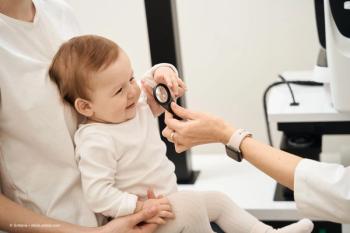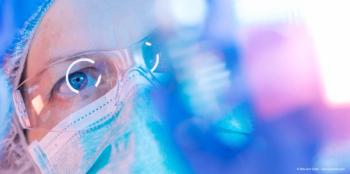
ASRS 2023: Efficacy/safety of biosimilars ranibizumab-nuna and ranibizumab-eqrn in clinical use
This study of patients was designed to identify unexpected adverse effects of these new pharmacologic therapies that may not have been observed or anticipated during clinical research trials. The studied drugs were biosimilars to the reference drug ranibizumab.
Reviewed by Carl C. Awh, MD, FASRS
Carl C. Awh, MD, FASRS, who reported on the outcomes after treatment with 2 new commercially available ranibizumab biosimilar agents, ranibizumab-nuna [Byooviz, Samsung Bioepsis] and ranibizumab-eqrn (Cimerli, Coherus BioSciences Inc.), described 3 cases of infectious endophthalmitis and 9 cases of minimal inflammation among more than 5,000 eyes (13,459 injections) treated in 16 retina practices.
This study of patients treated by a large national consortium of retina specialists was designed to identify unexpected adverse effects of these new pharmacologic therapies that may not have been observed or anticipated during clinical research trials. The studied drugs are biosimilars to the reference drug ranibizumab (Lucentis, Genentech/Roche), he explained.
“This analysis can provide useful information about the treatment response to the biosimilar agents ranibizumab-nuna and ranibizumab-eqrn. These outcomes may be of interest to retina specialists and patients as they consider treatment with these new biosimilar agents,” Awh commented.
The study was a retrospective, non-randomized, consecutive case series of eyes treated with either ranibizumab-nuna or ranibizumab-eqrn. The investigators reviewed the electronic medical records for each patient who had been followed for a minimum of 28 days after the first injection with either biosimilar agent.
The clinical information collected included the baseline demographics, diagnosis, number of previous anti-vascular endothelial growth factor (VEGF) injections, visual acuity (VA), and the biosimilar agent used. At subsequent visits, the VA, the presence of cells in the anterior chamber/vitreous, diagnosis of uveitis or vasculitis, or other adverse events were recorded.
A total of 5,085 eyes of 3,964 patients (61.38% women; mean age, 77.8) were identified that had been treated with ranibizumab-nuna (2,001 eyes) or ranibizumab-eqrn (3,084 eyes) and met the follow-up criterion.
The analysis showed that 3,957 eyes of 3,054 patients had been treated previously with anti-VEGF injections (mean number, 5.6). A total of 13,459 injections of ranibizumab biosimilar (8410 ranibizumab-eqrn and 5049 ranibizumab-nuna) were analyzed. The mean baseline VA was 0.564 logarithm of the minimum angle of resolution (logMAR); the mean VAs of the 5,085 eyes examined at about 1, 2, and 3 months after the baseline injection were, respectively, 0.564, 0.565, and 0.563 logMAR. The differences in the overall visual changes did not reach significance at any time point after the biosimilar injections.
Acute endophthalmitis developed in 3 (0.059%) eyes, and non-serious anterior chamber or vitreous cells were seen in 9 eyes; the latter did not result in treatment changes with the biosimilar ranibizumab. No cases of vasculitis developed, Awh reported.
Adverse events
The 3 cases of endophthalmitis had the typical presentation and clinical course of post-injection infectious endophthalmitis. Of these cases, 2 eyes regained vision after treatment with intravitreal antibiotics and vitrectomy. One eye of a patient who was medically unable to undergo vitrectomy developed profound vision loss. Although the rate of endophthalmitis was high, these cases were all reported among the first 2,000 eyes injected, with no other cases of endophthalmitis reported in the following 3000+ injected eyes.
Rare (+0.5) to +2.0 cell and flare developed in the anterior chamber or vitreous of 9 eyes after a biosimilar injection with no visual loss and no subsequent change in biosimilar treatment. Three of the 9 eyes had +0.5 cell; the other 5 eyes had +1.0 cells and flare in either the anterior chamber or vitreous. Of note, only 2 eyes were reported to have anterior chamber cells before the first biosimilar injection.
The take-home message was that the initial experience of a large consortium of retina specialists revealed no unusual adverse outcomes. The clinical efficacy of the biosimilar ranibizumab agents appeared similar to that of the reference drug (Lucentis). The observed rate of endophthalmitis was high but may be due to the small sample size.
Newsletter
Keep your retina practice on the forefront—subscribe for expert analysis and emerging trends in retinal disease management.















































